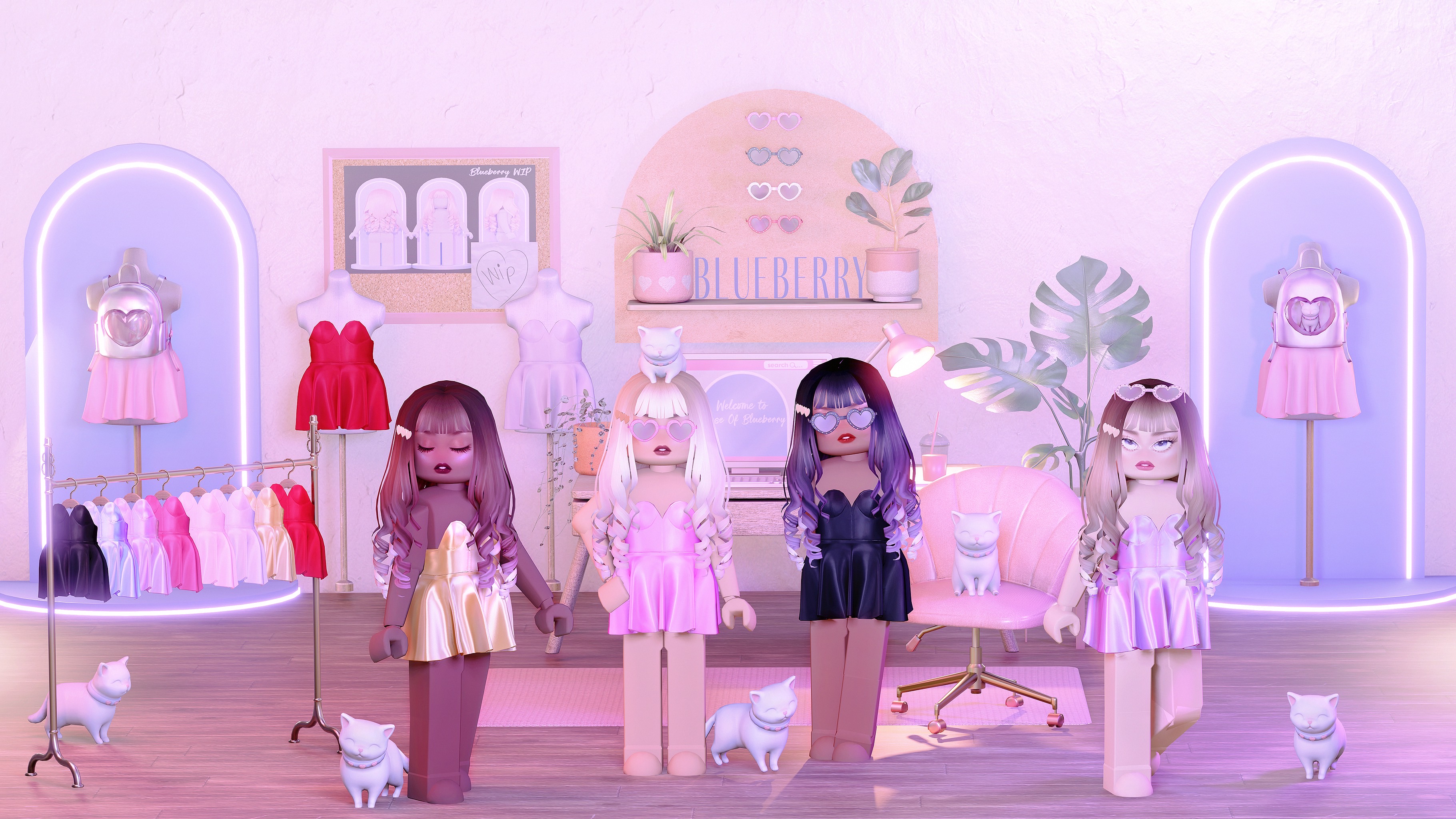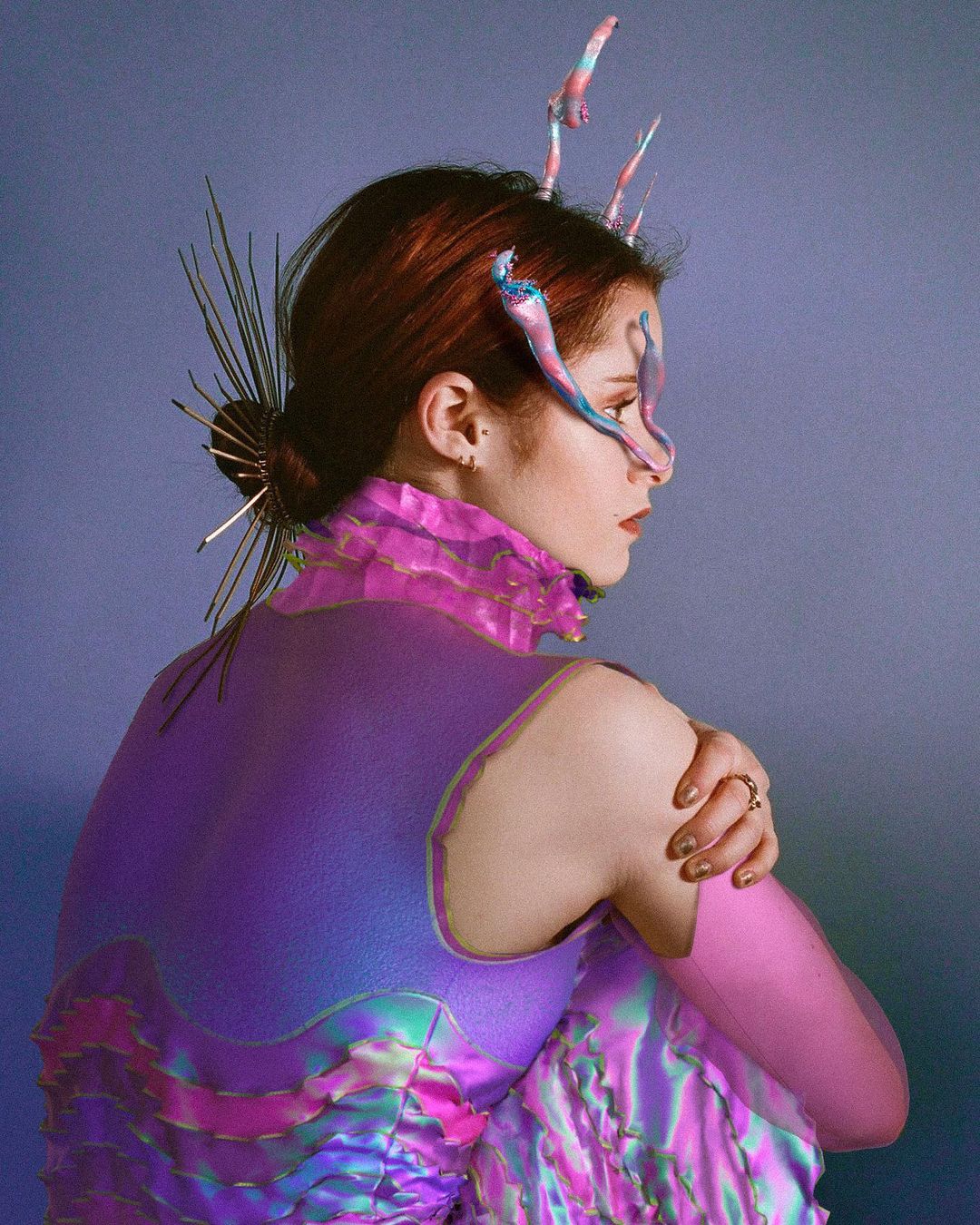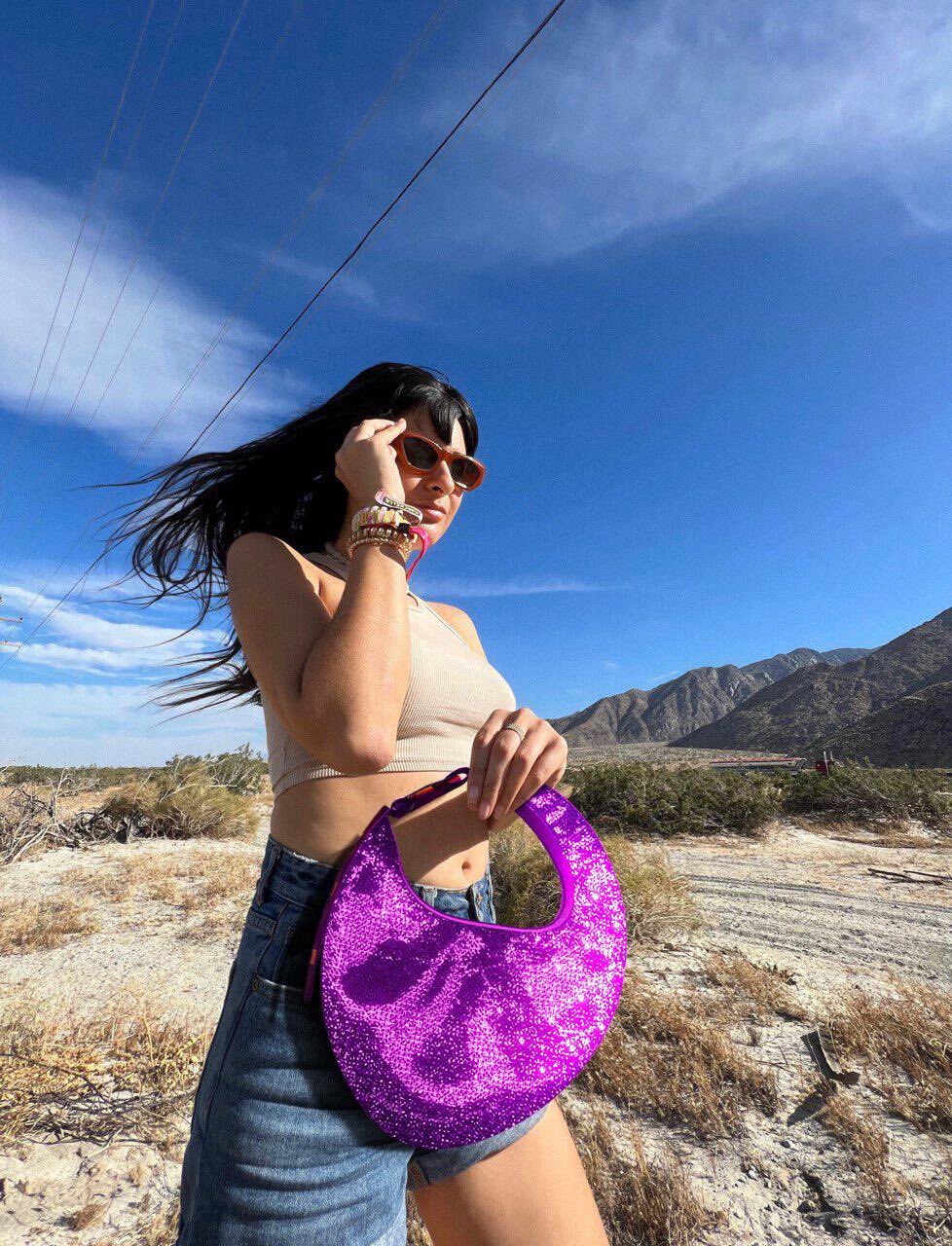Digital fashion designers have been paving the way for the virtual reality (VR) and augmented reality (AR) fashion industries. Not only have they created multi-million dollar virtual clothing brands, but there are also e-tailers creating eco-systems to house digital fashion designers’ work. Now heritage brands, like Gucci and Prada, want a piece of the VR and AR fashion action and are rapidly moving into the new digital landscape. We’re curious how the sudden mainstream appeal of digital fashion is affecting the industry. So, we spoke to four digital fashion designers (Mishi McDuff, Larissa Castellano Pucci, Anna Lisa Liedtke, and Diana Perfilieva) to find out how the digital fashion industry has changed since they started their journeys and how they predict it will evolve in the future.
Mishi McDuff
Mishi McDuff is a Turkish digital fashion designer who founded an incredibly successful virtual clothing house, House of Blueberry. McDuff started designing dresses in 2012 on the popular game Second Life (an early version of a Metaverse land). Today, she partners with physical clothing designers, like Jonathan Simkhai, for metaverse brand activations.

How has digital fashion changed since you first started designing, and where do you think it’s going?
Mishi McDuff: “As digital fashion has grown in popularity, it’s also become more inclusive of a diverse range of people, personal styles, and body shapes. People seek out products that make them feel like their most authentic selves—imperfections and all. Moving forward, I think we’ll see even more realism and authenticity incorporated into digital fashion.”
Browse House of Blueberry clothing on Roblox and Second Life. You can also, join House of Blueberry’s Discord and follow the brand on Twitter to keep up with the latest collection drops.
Larissa Castellano Pucci
Larissa Castellano Pucci is an Italian digital fashion designer and the granddaughter of the renowned designer Emilio Pucci. She identified a gap in the fashion market for digital wearables after graduating from Cornell University in 2018 with a degree in information science and saw how technology could be used to tackle problems in the fashion industry, like preserving archived collections. Her strong background in fashion and interest in Web3 technology led her to digital fashion design, but her grandfather is her biggest influence-her first digital wearable involved replicating one of his garments digitally. Today, Larissa Castellano Pucci works as the founder and creative director of the phygital fashion house, Foulara.

How has digital fashion changed since you first started designing, and where do you think it’s going?
Larissa Castellano Pucci: “When I first started looking at digital fashion, this world did not really exist unless it was tied to character design or within the fashion world as a means to rapidly prototype silhouettes and avoid costs. Today digital fashion is its own subject and has its own platforms, economy and rules. Perhaps the biggest addition and change to the landscape was the boom of NFTs. What excites me the most about NFTs is that the creative process is a conversation, and the creative pipeline is being reimagined.”
Find Larissa Castellano Pucci’s Marea collection on the DRESSX website. Discover more of her work on her website and on Instagram, @foulara.it, or by going to the Foulara website.
Anna Lisa Liedtke
Anna Lisa Liedtke is a digital fashion designer who started in physical fashion and then cut her teeth in digital design in 2018 when she received training in a 3D software called CLO 3D (a program that allows you to sew your garment with its software and immediately see the result). Today, she trains others to use CLO 3D and works as the Director of Digital Fashion at The Fabricant (a digital-first fashion house).

How has digital fashion changed since you first started designing, and where do you think it’s going?
Anna Lisa Liedtke: “I wanted to recreate physical garments with the software. Catching all details and being photo-realistic drove me nuts. I had no idea how to bring in all this realism. In fact, I was depressed by comparing myself to a 3D artist and trying to understand what the difference was. It’s a long study, and I ask a lot for your support in the 3D fashion community. I think mainly while I published my stuff on Instagram, I texted other designers who went on the same journey as me.
I think I mainly started to rethink my physical approach to designing garments when I started at The Fabricant, a digital-only fashion house. Gravity-defying garments and materials you could never use in real life inspired me to go a step further and execute the design with a new language of texture surfaces. But in general, I still love to recreate physical-based garments, I think the balance of digital and physical makes a digital look exciting.”
Find Anna’s work on her Instagram, here.
Diana Perfilieva
Diana Perfilieva is a Founder and CEO of Diverge, a Metaverse fashion brand created to bring high-end fashion aesthetics into the web 3 and inspire everyone to start a digital fashion journey through an easy all-in-1 solution IT-bag.

How has digital fashion changed since you first started designing, and where do you think it’s going?
Diana Perfilieva: “Digital fashion and web3, in general, are changing day by day. We can observe that more and more fashion insiders are joining web3, and more and more worldwide fashion brands are joining web3, creating their own NFT collections or collaborating with digital brands. I see great potential in this field, and our main goal is to make Metaverse fashionable.”
Find Dina’s work on her official website, www.diverge.me, and also on Diverge’s social media accounts, including its Discord and Twitter.








